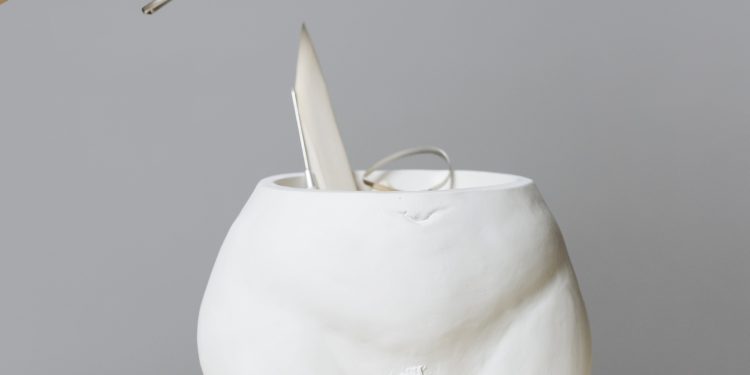Labiaplasty has a fascinating history that dates back to ancient Egypt, where cultural beliefs were deeply intertwined with the bisexuality of the gods. It has gained popularity recently due to its potential to enhance both the cosmetic and comfort of the genital area. Like any procedure, it’s vital to thoroughly understand the benefits, risks, costs and other considerations of labiaplasty.
This post provides valuable insights for women seeking more information on this procedure.
Table of Contents
What is Labiaplasty?
Labiaplasty is an elective vaginal plastic surgical procedure aimed at reducing the length of redundant labia minora (inner lips) in a female.
What is the goal of Labiaplasty
Labiaplasty aims to achieve genital proportion and harmony for each patient’s anatomy. Statistics show that labiaplasty is the most commonly performed genital cosmetic procedure.
What are the reasons for undergoing Labiaplasty?
According to studies, the following are the main reasons why women desire labiaplasty:
- Cosmetic. This includes restoring a more youthful look after childbirth or aging, reducing asymmetry of the labia and increasing self-confidence.
- Functional. This includes the reduction of physical discomfort and irritation during physical activity and sexual intercourse. This may also improve hygiene and health since excess labia tissue can harbor bacteria and thus precipitate the development of urinary tract infections.
- Psychological. The aim is to improve comfort, confidence, and a sense of well-being about the look of the external genitalia during intercourse.
- A lot of patients find increased sexual satisfaction following a labiaplasty.
What to expect before and after Labiaplasty
The following are what you can expect before and after a labiaplasty surgery:
Preoperative
- Consultation: You must discuss your objectives, expectations and concerns prior to the procedure. Your surgeon will assess your anatomy and health to determine if you are a good candidate.
- Medical Evaluation: You will undergo a comprehensive medical evaluation to ensure you are fit for the procedure and have no contraindications.
- Surgical Planning: Your healthcare provider will develop a surgical plan tailored to your personal needs. This plan will consider the size and shape of your labia, your expectation and which specific surgical technique to be used.
- Preoperative Instructions: You may be required to perform an overnight fast, discontinue certain medications, and avoid smoking and alcohol in the days leading to the procedure. Others include performing the procedure after your menstruation and shaving the genital area.
- Anaesthetic Choice: You will discuss the type of anaesthesia used during the procedure, ranging from local anaesthesia with sedation to regional anaesthesia and general anaesthesia. This depends on your preference and your healthcare provider’s recommendation.
Postoperative
- After the treatment, you will be asked to:
- Avoid prolonged standing as this encourages swelling of the surgery site.
- Apply ice packs to the area of surgery to help reduce swelling.
- Use a squirt bottle to help keep the perineum clean and dry.
- Avoid inserting tampons for about 8 weeks following surgery.
- Avoid sexual intercourse or exercise until at least 4 weeks after the procedure.
- Be patient and realistic with your expectations.
What is involved in a Labiaplasty surgery?
The procedure involves the following steps:
- Incisions: Your surgeon will make one or several incisions on the labia minora. The type of incision may vary based on the technique used (trim, wedge or Z-plasty). The incision follows the natural folds of the labia minora to minimize visible scarring.
- Tissue Removal: Redundant labial tissue is carefully removed based on your cosmetic preferences and functional concerns.
- Suturing: The incisions will be meticulously closed with absorbable, fine sutures to support proper wound healing and reduce labiaplasty recovery time.
- Reshaping: Your surgeon will reshape the labia minora to achieve the desired appearance, ensuring symmetry and balance.
Who should not get Labiaplasty?
The following are individuals who should not get the procedure:
Minors.
- People with cognitive impairment who cannot provide consent.
- People with unrealistic expectations.
- People with certain medical conditions, such as uncontrolled diabetes, bleeding disorders & active genital infections, are not allowed to take this procedure.
- Pregnant women or women in the puerperium, as the physical changes of pregnancy can affect and alter the procedure results.
Side effects/complications following a Labiaplasty procedure
- Infection.
- Bleeding.
- Haematoma formation, which can result in pain, swelling and discomfort.
- Scarring. Although this is less likely with the wedge technique.
- Temporary or permanent changes in sensation around the labia minora.
- Risk of asymmetry in the labial appearance.
- Poor wound healing, wound breakdown and separation may occur following a wedge labiaplasty.
- Unsatisfactory cosmetic outcome, which falls short of the patient’s expectation and may require a revision.
Frequently Asked Questions
Is the Labiaplasty procedure painful?
While the labia are indeed a sensitive area, the labiaplasty procedure itself is not painful as the surgery is performed under anaesthesia. Postoperative pain may stem from swelling, but this discomfort can be managed effectively with medications.
Is Labiaplasty safe?
Labiaplasty can be a safe procedure when performed by a skilled and experienced surgeon in an accredited medical facility. However, like any surgical procedure, it carries inherent risks and potential complications.
How long does a Labiaplasty procedure last?
This procedure can take anywhere from 1-2 hours, depending on factors such as the complexity of the surgery, the surgeon’s experience, and the specific technique used.
Will I lose sensation in the intimate area after a Labiaplasty procedure?
During the procedure, it is the tissues that are removed. The nerves remain intact. Hence, the sensation and sexual pleasure before the procedure are the same as post-surgery. Sexual satisfaction may improve because the patient experiences better confidence and comfort during sex.
How long does it take to recover after a Labiaplasty procedure?
A few days after the procedure, patients can return to work. However, it is advised that they avoid strenuous exercises and sexual intercourse within the first six weeks following surgery.
How much does Labiaplasty cost?
The cost of a labiaplasty procedure in the United States can range from approximately $2,000-$6,000 depending on the geographical location, surgeon’s experience and qualifications, complexity of the procedure and technique used.
Is Labiaplasty covered by health insurance?
Labiaplasty is generally considered an elective procedure, and as such, it is typically not eligible for coverage under health insurance plans. Health insurance typically excludes coverage for cosmetic surgeries that women choose for cosmetic reasons.
Conclusion
This post provides a balanced and informative resource for people seeking knowledge about Labiaplasty. Interested readers should undergo this procedure with caution, ensuring that it aligns with their personal goals, values and preferences.
References
Cosmetic Surgery National Data Bank Statistics. “Cosmetic surgery national data bank statistics.” Aesthetic Surgery Journal 38.Suppl. 3 (2018): 1-24.
Dogan, Ozan, and Murat Yassa. “Major motivators and sociodemographic features of women undergoing labiaplasty.” Aesthetic surgery journal 39.12 (2019): NP517-NP527.
.


 Home
Home










